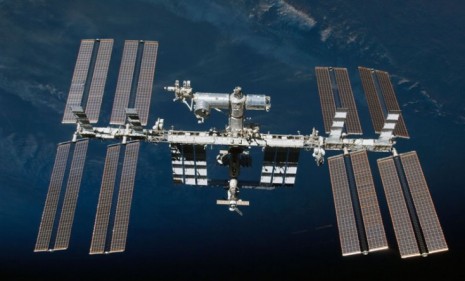China's 'heavenly palace' space station
With the U.S. scaling back NASA's efforts, is China's plan to build its own ambitious space station just one more sign of the Asian nation's ascendancy?

This week, China unfurled ambitious plans to extend its influence beyond the planet. At the center of its "big thinking" strategy is China's first space station, provisionally called Tiangong ("heavenly palace"), slated to be fully operational by 2020. Meanwhile, the U.S. is just about to retire its last vehicle that can take astronauts into space. Since China independently sent its first "taikonaut" into orbit only in 2003, does this rapid ramp-up signal that China is on its way to being the new master of space?
What's China's plan?
China plans to launch the space station's first section, Tiangong-1, this year, and practice docking a spacecraft to it. Up next: Tiangong-2, where three taikonauts will be able to live and work for 20-day stretches; Tiangong-3 is supposed to launch in 2015. By 2020, the space station should have a 60-foot-long main capsule with two 47-foot laboratory modules connected at right angles, plus a cargo bay and solar panels.
The Week
Escape your echo chamber. Get the facts behind the news, plus analysis from multiple perspectives.

Sign up for The Week's Free Newsletters
From our morning news briefing to a weekly Good News Newsletter, get the best of The Week delivered directly to your inbox.
From our morning news briefing to a weekly Good News Newsletter, get the best of The Week delivered directly to your inbox.
How does Tiangong stack up to other space stations?
It's admittedly more modest. "To a layperson, mockups of China's space station look a great deal like the International Space Station," says John Herrman in SmartPlanet. But with a weight of 60 tons, it's "a bit of a runt." The international space station is 419 tons, and even Russia's smaller Mir station weighed 137 tons.
Can China get this done by 2020?
It's "a fairly ambitious target," at least compared with Western space projects, says SmartPlanet's Herrman. The international space station, for example, took about 15 years to build. "But if China is willing to spend enough effort and money on the program, it’s not an implausible estimate." It's more than plausible, says Christopher Mims in Fast Company. "The thing about China — a nation led by engineers — is that through the vehicle of its five-year plans, its government methodically pursues its stated goals."
A free daily email with the biggest news stories of the day – and the best features from TheWeek.com
Isn't China still playing catch-up?
Yes... for now. The first space station, Russia's Salyut, launched in 1971, and the U.S. sent Skylab up in 1973. But that headstart won't last forever, and the new technologies China develops in the next decade will "put China in a powerfully autonomous position in space," says Clay Dillow at PopSci, especially since the international space station is slated to be put to pasture about when Tiangong is ready.
So, should we welcome China to space?
A Chinese space station will be "a potent political symbol" of the shift in power, both on Earth and above it, says Fast Company's Mims. Especially when China uses that station to reproduce America's "most singular moment of scientific and military triumph, a boot-print on lunar soil." If China starts to mine the moon, or beats us to Mars, that will just seal its position as "the world's current leading space power."
Sources: The Guardian, SmartPlanet, Popular Science, Fast Company, Mashable

